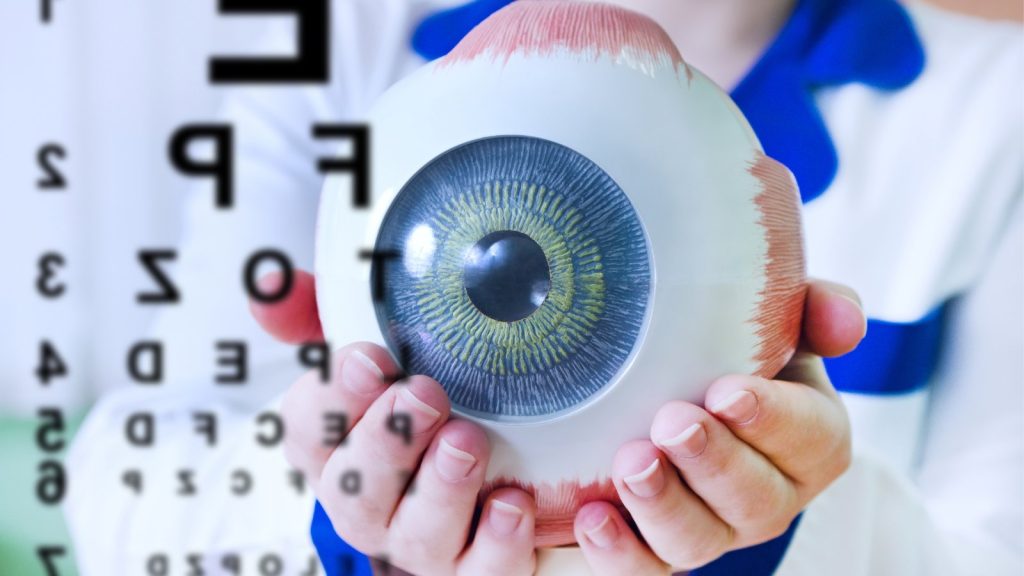Refractive Surgeries in AL: Improve Your Vision with Specialist Care
Refractive Surgeries in AL: Improve Your Vision with Specialist Care
Blog Article
The Function of Advanced Diagnostic Devices in Identifying Eye Disorders
In the realm of ophthalmology, the application of sophisticated analysis devices has reinvented the early recognition and administration of different eye problems. From identifying subtle modifications in the optic nerve to checking the development of retinal conditions, these innovations play a pivotal function in boosting the precision and performance of diagnosing ocular conditions. As the demand for exact and timely diagnoses remains to grow, the combination of cutting-edge devices like optical comprehensibility tomography and visual area screening has come to be important in the realm of eye care. The intricate interplay in between modern technology and ophthalmic practices not only clarifies intricate pathologies yet also opens doors to tailored therapy approaches.
Significance of Early Diagnosis
Early diagnosis plays a critical duty in the reliable monitoring and therapy of eye problems. By discovering eye problems at a very early phase, healthcare suppliers can use appropriate treatment plans customized to the particular problem, eventually leading to better outcomes for individuals.

Modern Technology for Identifying Glaucoma
Advanced analysis technologies play a crucial role in the very early discovery and tracking of glaucoma, a leading root cause of permanent loss of sight worldwide. One such modern technology is optical coherence tomography (OCT), which gives in-depth cross-sectional photos of the retina, allowing for the measurement of retinal nerve fiber layer thickness. This dimension is necessary in examining damages created by glaucoma. Another advanced tool is visual field testing, which maps the level of sensitivity of a client's aesthetic field, assisting to find any areas of vision loss feature of glaucoma. Furthermore, tonometry is made use of to determine intraocular stress, a major threat aspect for glaucoma. This examination is critical as raised intraocular stress can result in optic nerve damage. Newer modern technologies like the use of synthetic intelligence algorithms in analyzing imaging data are showing appealing outcomes in the early discovery of glaucoma. These advanced analysis devices make it possible for ophthalmologists to identify glaucoma in its very early phases, permitting timely intervention and much better management of the condition to stop vision loss.
Duty of Optical Coherence Tomography

OCT's capacity to quantify retinal nerve fiber layer density enables precise and unbiased dimensions, helping in the early detection of glaucoma also prior to visual area flaws come to be apparent. OCT innovation permits longitudinal surveillance of architectural adjustments over time, promoting tailored treatment plans and prompt treatments to aid preserve patients' vision. The non-invasive next page nature of OCT imaging also makes it a preferred choice for keeping track of glaucoma development, as it can be repeated consistently without causing discomfort to the individual. Generally, OCT plays a vital duty in boosting the diagnostic accuracy and monitoring of glaucoma, ultimately adding to better results for people at threat of vision loss.
Enhancing Diagnosis With Visual Field Screening
A necessary part in extensive ocular assessments, aesthetic field testing plays an essential function in enhancing the diagnostic procedure for numerous eye disorders. By analyzing the complete extent of a patient's visual field, this examination provides essential information concerning the functional stability of the entire aesthetic path, from the retina to the visual cortex.
Visual field testing is particularly important in the medical diagnosis and administration of problems such as glaucoma, optic nerve conditions, and numerous neurological conditions that can affect vision. With measurable dimensions of outer and central vision, clinicians can find subtle adjustments that may suggest the existence or development of these problems, even before obvious signs take place.
Furthermore, visual field testing permits the tracking of treatment efficacy, assisting eye doctors tailor healing interventions to specific patients. eyecare near me. By tracking modifications in aesthetic area performance with time, address doctor can make informed decisions concerning changing medications, recommending surgical treatments, or carrying out various other appropriate measures to preserve or boost try this an individual's aesthetic feature
Taking Care Of Macular Degeneration
Final Thought
In verdict, advanced analysis tools play a vital duty in identifying eye problems early on. Technologies such as Optical Coherence Tomography and visual area testing have substantially enhanced the accuracy and effectiveness of diagnosing problems like glaucoma and macular deterioration.
Report this page